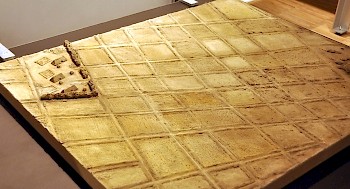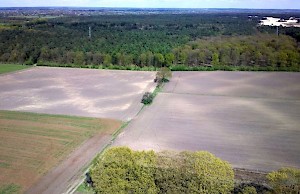"Celtic Fields"
Celtic Field: small, square or rectancular field, used to produce wheat or spelt. In spite of their name, Celtic Fields have little to do with the Celts: they were in use from the Early Bronze Age until the Roman period. They are found in Northwestern Europe.

The name “Celtic Field”, coined by British archaeologists in the 1920s, is a bit of a misnomer, because it suggests that these agricultural field systems were used by the Celts. In fact, they can be much older and younger: they can be as old as the Early Bronze Age (c. 1800 BCE) and as young as the Early Middle Ages (c. 650 CE). Besides, Celtic Fields are nearly always found outside the area of the Celtic La Tène culture: in Belgium, Denmark, England, Germany, Netherlands, Poland, and Sweden - in other words, all over northwestern Europe.

Celtic Fields consist of dozens of small, square or rectangular fields. A typical unit measures about 35 x 35 meters, although they may be a bit smaller (30 x 30 meters) or a bit larger (50 x 50 meters). The size suggests that each was cultivated by one family or perhaps even a single individual.
Nowadays, these ancient fields can be recognized because they are surrounded by low walls. When the soil was exhausted, it was pushed aside, and replaced by fertile soil that has been brought from somewhere else. Celtic Field agriculture is therefore quite labor-intensive, but it is also more efficient than older approaches, like “slash and burn” agriculture. It is probably no coincidence that the first use of Celtic Fields in a region very often coincides with population growth, which may be cause or consequence of the introduction of Celtic Field agriculture.

Among the crops were especially emmer and spelt, but also barley, pigeon beans, and false flax. After the arrival of the Romans, rye was cultivated as well.
Already in 1660, the Dutch scholar Johan Picardt observed (correctly) that the Celtic Fields belonged to a pre-Christian past. Today, these agricultural field systems can best be seen from the air, because the low walls have a different color. Only rarely, the earthworks can still be recognized.